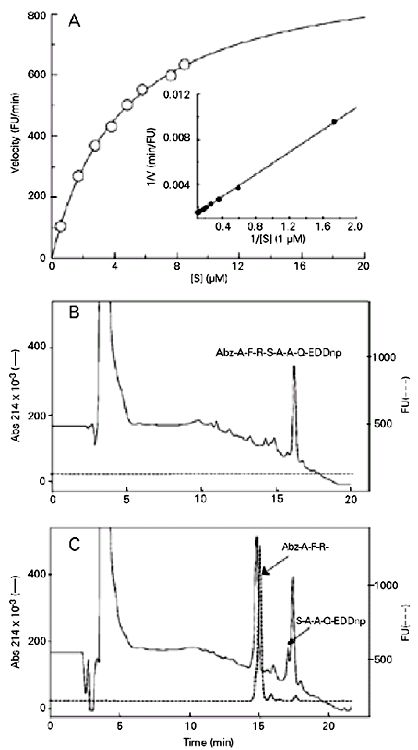The protease ZapA, secreted by Proteus mirabilis, has been considered to be a virulence factor of this opportunistic bacterium. The control of its expression requires the use of an appropriate methodology, which until now has not been developed. The present study focused on the replacement of azocasein with fluorogenic substrates, and on the definition of enzyme specificity. Eight fluorogenic substrates were tested, and the peptide Abz-Ala-Phe-Arg-Ser-Ala-Ala-Gln-EDDnp was found to be the most convenient for use as an operational substrate for ZapA. A single peptide bond (Arg-Ser) was cleaved with a Km of 4.6 µM, a k cat of 1.73 s-1, and a catalytic efficiency of 376 (mM s)-1. Another good substrate for ZapA was peptide 6 (Abz-Arg-Pro-Pro-Gly-Phe-Ser-Pro-Phe-Arg-Gln-EDDnp) which was cleaved at a single bond (Phe-Ser) with a Km of 13.6 µM, a k cat of 3.96 s-1 and a catalytic efficiency of 291 (mM s)-1. The properties of the amino acids flanking the scissile bonds were also evaluated, and no clear requirement for the amino acid residue at P1 was found, although the enzyme seems to have a preference for a hydrophobic residue at P2.
metalloprotease; substrate specificity; quenched fluorescence peptides; Proteus mirabilis

